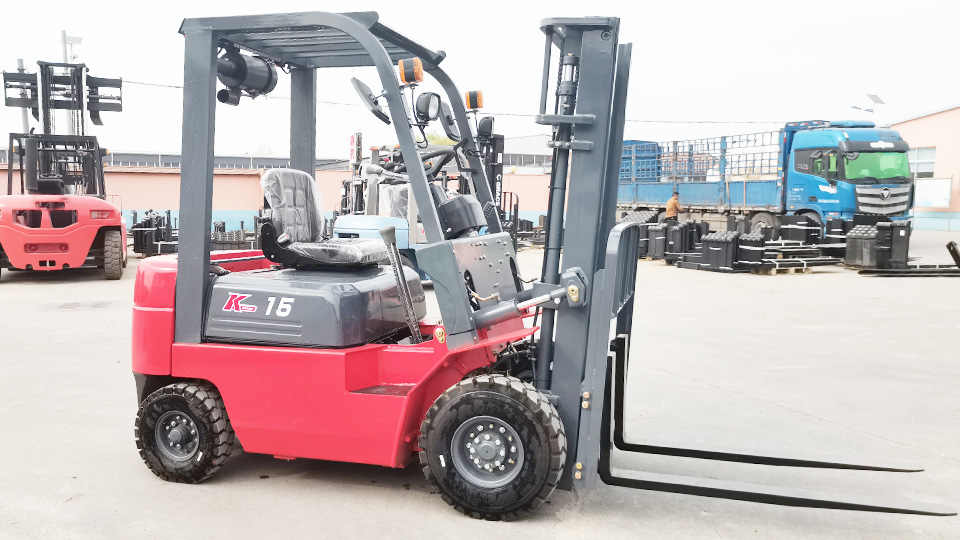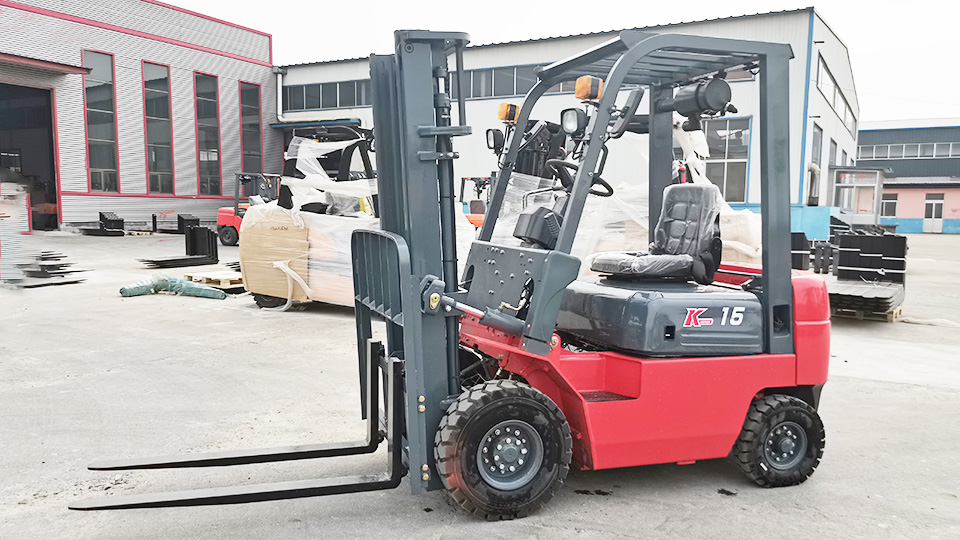
Lifting Giants: Determining the Right Forklift Size for Shipping Containers
Shipping containers, those ubiquitous steel boxes that crisscross the globe, are the backbone of modern logistics. Their robust construction and standardized dimensions facilitate efficient transportation of vast quantities of goods. However, the very characteristics that make them ideal for shipping – their size and weight – present a significant challenge when it comes to handling them on the ground. Choosing the right forklift to lift a shipping container is not a trivial decision. It demands a thorough understanding of container specifications, forklift capacities, load distribution, and critical safety considerations. Selecting an undersized forklift can lead to equipment damage, load instability, and, most importantly, serious safety hazards. This comprehensive technical article will delve into the crucial factors involved in determining the appropriate forklift size for lifting shipping containers, providing the knowledge necessary to make a safe and efficient choice.
Understanding the Dimensions and Weights of Shipping Containers:
The first step in determining the right forklift size is to understand the standard dimensions and typical weights of shipping containers you will be handling. While there are various specialized container types, the most common are:
20-foot Standard Container:
External Length: Approximately 20 feet (6.1 meters)
External Width: Approximately 8 feet (2.44 meters)
External Height: Approximately 8.5 feet (2.59 meters) (Standard Height) or 9.5 feet (2.9 meters) (High Cube)
Tare Weight (Empty): Typically between 4,850 lbs (2,200 kg) and 5,070 lbs (2,300 kg)
Maximum Gross Weight: Around 67,200 lbs (30,480 kg)
40-foot Standard Container:
External Length: Approximately 40 feet (12.2 meters)
External Width: Approximately 8 feet (2.44 meters)
External Height: Approximately 8.5 feet (2.59 meters) (Standard Height) or 9.5 feet (2.9 meters) (High Cube)
Tare Weight (Empty): Typically between 8,380 lbs (3,800 kg) and 8,770 lbs (3,980 kg)
Maximum Gross Weight: Around 67,200 lbs (30,480 kg)
It's crucial to note that the maximum gross weight represents the total allowable weight of the container and its contents. You will need to consider both empty and loaded containers. Furthermore, specialized containers like refrigerated units (reefers) or open-top containers can have different tare weights. Always verify the specific weight markings on the containers you will be handling.
The Critical Factor: Forklift Capacity and Load Center:

The most important specification of a forklift when considering lifting a shipping container is its rated lifting capacity. This is the maximum weight the forklift can safely lift at a specified load center. The load center is the horizontal distance from the front face of the forks to the center of gravity of the load.
For standard forklifts, the rated capacity is often given at a 24-inch (600 mm) load center. However, shipping containers are significantly longer, and their center of gravity when lifted will be much further from the forklift mast. This increased load center drastically reduces the effective lifting capacity of the forklift.
Why a Standard Forklift is Often Insufficient:
While a standard 5,000 lb capacity forklift might seem adequate for lifting an empty 20-foot container (with a tare weight around that figure), the extended load center makes this a dangerous and often impossible task. The center of gravity of a 20-foot container, when lifted from one end, will be approximately 10 feet (3 meters) from the lifting point. Similarly, for a 40-foot container, it will be around 20 feet (6 meters).
Forklift capacity de-ratings are significant as the load center increases. A forklift rated for 5,000 lbs at a 24-inch load center might only be capable of lifting a fraction of that weight at a 10-foot or 20-foot load center. Attempting to lift a container with an undersized forklift can lead to:
Tipping: The excessive load moment (weight multiplied by load center distance) can easily overcome the forklift's stability, causing it to tip forward.
Structural Damage: Overstressing the forklift's frame, mast, and hydraulic components can lead to costly damage and potential failure.
Load Dropping: Insufficient lifting capacity can result in the inability to securely hold the container, leading to it being dropped and causing significant damage or injury.
Specialized Equipment for Lifting Shipping Containers:
Due to the unique challenges posed by shipping containers, standard counterbalance forklifts are generally not suitable for handling fully loaded containers or even empty ones in many scenarios without specialized attachments or being specifically designed for container handling. The primary types of equipment designed for this task include:
1. Heavy-Duty Container Handler Forklifts:
These are purpose-built forklifts engineered with extremely high lifting capacities and extended load centers specifically for handling shipping containers. They often feature:
High Lifting Capacities: Ranging from tens of thousands to over a hundred thousand pounds (e.g., 50,000 lbs to 110,000 lbs or more).
Long Wheelbases and Wide Stances: Providing enhanced stability for handling large, heavy loads.
Powerful Hydraulic Systems: Capable of lifting and maneuvering heavy containers.
Specialized Attachments: Such as top spreaders or side pick attachments designed to securely engage with the container's corner castings.
Reinforced Masts and Frames: Built to withstand the stresses of lifting and transporting containers.
2. Reach Stackers:
Reach stackers are versatile machines that can lift containers to significant heights and stack them in container yards. They offer excellent maneuverability and reach capabilities.
High Lifting Capacities and Heights: Capable of lifting fully loaded containers several tiers high.
Telescopic Booms: Allow for reaching over other containers.
Spreader Attachments: Designed for secure top lifting of containers.
3. Empty Container Handlers:
These are specialized forklifts designed specifically for handling empty shipping containers. They typically have:
Moderate Lifting Capacities: Sufficient for the tare weights of empty containers (e.g., 10,000 lbs to 20,000 lbs).
Longer Reach and Specialized Attachments: Often featuring multiple forks or specialized frames to lift multiple empty containers simultaneously, increasing efficiency in container depots.
Determining the Right Size: A Step-by-Step Approach:
To determine the appropriate forklift size for your specific needs, follow these steps:
1. Identify the Types and Sizes of Containers:
Determine whether you will be handling 20-foot, 40-foot, standard height, high cube, or other specialized containers.
2. Determine the Maximum Weight of the Containers:

Will you be lifting empty containers only, partially loaded containers, or fully loaded containers at their maximum gross weight? This is the most critical factor.
3. Consider the Lifting Method:
How will you be engaging the container? Will you be using:
Forks: This is generally only feasible for empty or very lightly loaded containers and requires careful consideration of the load center and potential for instability. Specialized fork extensions and techniques might be necessary.
Top Spreader: A frame that locks into the container's top corner castings. This is the safest and most common method for handling loaded containers.
Side Pick Attachment: Grips the container from the sides, often used in intermodal operations.
4. Calculate the Effective Load Center:
If using forks, estimate the distance from the front face of the forks to the center of gravity of the container when lifted. For a 20-foot container lifted from one end, this is approximately 10 feet (3 meters). For a 40-foot container, it's around 20 feet (6 meters).
5. Consult Forklift Capacity Charts:
Once you know the maximum weight and the effective load center, you must consult the capacity chart (load rating plate) of any potential forklift. This chart will show the allowable lifting capacity at various load centers and lift heights.
Crucially, ensure that the forklift's capacity at the calculated load center exceeds the maximum weight of the container you intend to lift with a significant safety margin. A common recommendation is to have at least 15-20% more capacity than the maximum anticipated load.
Example:
Let's say you need to lift an empty 20-foot standard container weighing 5,000 lbs. If you intend to lift it using standard forklift forks, the load center will be approximately 10 feet (120 inches). You would need to find a forklift whose capacity chart shows a lifting capacity of at least 5,750 lbs to 6,000 lbs (5,000 lbs + 15-20%) at a 120-inch load center. A standard 5,000 lb forklift rated at a 24-inch load center will likely have a drastically reduced capacity at 120 inches, potentially making the lift unsafe or impossible.
If you plan to lift a fully loaded 20-foot container with a maximum gross weight of 67,200 lbs using a top spreader, you would need a heavy-duty container handler specifically designed for this weight and equipped with the appropriate attachment. A standard forklift, even with a large initial capacity rating at a short load center, will be completely inadequate.
6. Consider the Lifting Height:
While the primary concern for container handling is often the weight and load center, the required lifting height also plays a role. Ensure the selected forklift can lift the container to the necessary height for your application (e.g., loading onto a chassis, stacking empty containers). The capacity chart will also show how the lifting capacity changes with height.
7. Evaluate the Operating Environment:
Consider the terrain, ground conditions, and any obstacles in the operating area. Uneven surfaces can further reduce stability and require a larger, more robust forklift.
8. Factor in Attachments:
If you will be using specialized attachments like top spreaders or side picks, ensure the forklift is compatible with these attachments and that the attachment's weight and impact on the overall load center are accounted for in the capacity calculations.
Safety First: The Non-Negotiable Priority:
Lifting shipping containers is a high-risk operation that demands strict adherence to safety protocols. Never attempt to lift a container with a forklift that is not explicitly rated for the task, considering the weight, load center, and lifting method.
Only trained and certified operators should handle shipping containers.
Always perform a thorough pre-shift inspection of the forklift and any attachments.
Ensure the container is properly secured to the attachment before lifting.
Lift and lower containers smoothly and avoid sudden movements.
Travel with the container as low as possible.
Be aware of the forklift's limitations and never exceed them.
Use spotters when necessary, especially in congested areas.
Conclusion:
Determining the right forklift size for lifting shipping containers is a critical decision that directly impacts safety and operational efficiency. Standard counterbalance forklifts are generally insufficient for handling loaded containers and often even pose risks with empty ones due to the significant load center. Heavy-duty container handlers, reach stackers, and empty container handlers are specialized equipment designed for this demanding task. The key is to accurately assess the weight of the containers, understand the effective load center based on the lifting method, and meticulously consult the forklift's capacity chart. Always prioritize safety and ensure that the selected forklift has ample capacity for the intended load and operating conditions. Lifting giants requires the right tools and a commitment to safe operating practices.
Name: selena
Mobile:+86-13176910558
Tel:+86-0535-2090977
Whatsapp:8613181602336
Email:vip@mingyuforklift.com
Add:Xiaqiu Town, Laizhou, Yantai City, Shandong Province, China